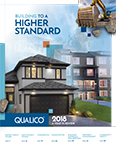Sterling Homes Calgary Showcases Two Approaches to Energy Efficient, Sustainable Design
Calgary, AB – Sterling Homes Calgary has created two showhomes that showcase different approaches to sustainability, while factoring in short-term costs and long-term savings for homeowners.
Mike Cole, Operations Manager at Sterling Homes Calgary, noted which key sustainability features were highlighted in each home and incorporated into the overall design.
“Sterling constructed the Harmony and Sirocco homes to represent two very different ways to achieve energy efficiency,” he said, “showing all of our customers that we can produce their dreams in a variety of ways. The Harmony house is an example of how products and building techniques can be used to maximize code performance via the building envelope, while the Sirocco house shows the addition of renewable energy to the home and the simplicity of including recoverable energy in residential construction.”
High-Impact Building Envelope
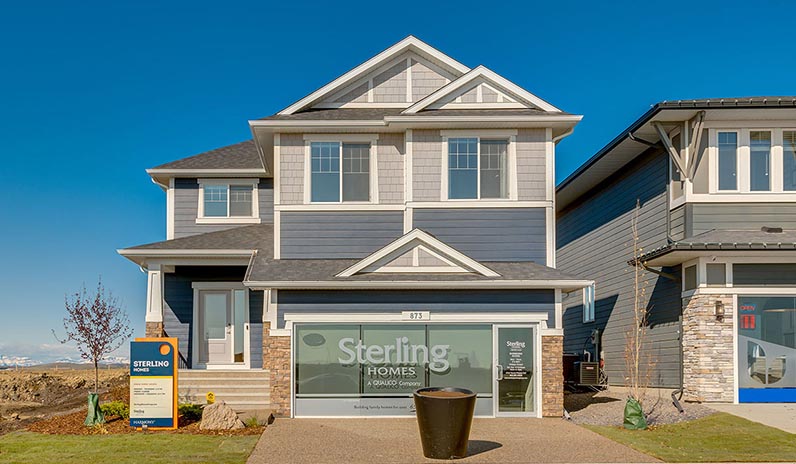
Located in the Harmony neighbourhood in the community of Springbank, the home at 873 Sailfin Dr. features a combination of a low air exchange rate (AER) and a superior building envelope that allows it to be extremely energy-efficient.
Mike explained the significance of the home’s sustainable features in the context of future environmental requirements, (like the Pan-Canadian agreement set for 2032) that will affect all types of businesses across the country once implemented, including home construction.
“Specifically for housing, it means that all new homes will be required to be net-zero ready,” he said, “meaning that with minor energy recovery systems, the house nets zero energy usage yearly. What this means in practicality is that the builder must make incredible efforts to ensure, firstly, the most effective energy-efficient products are used, and secondly, that advanced building techniques are applied to ensure that there is no wasted/lost energy in the building’s daily operations.”
According to Mike, Sterling Homes' standard homes today continually achieve a 25 per cent greater performance than what is outlined in the current code. In the case of the Harmony, the design puts the home at a level that exceeds the current code by 54 per cent based on EnerGuide.
One of the key aspects of the home’s sustainability is the high-quality building envelope, which involves multiple parts of the home’s exterior wall system. For example, much of the insulation used in the home is R-24 batt insulation, which has a higher rating than the standard R-20 batt insulation used in most new homes. In addition, the Harmony home includes triple pane solar gain windows, which help to keep the air temperature inside the home consistent, as well as release into the home any heat that is absorbed by the windows.
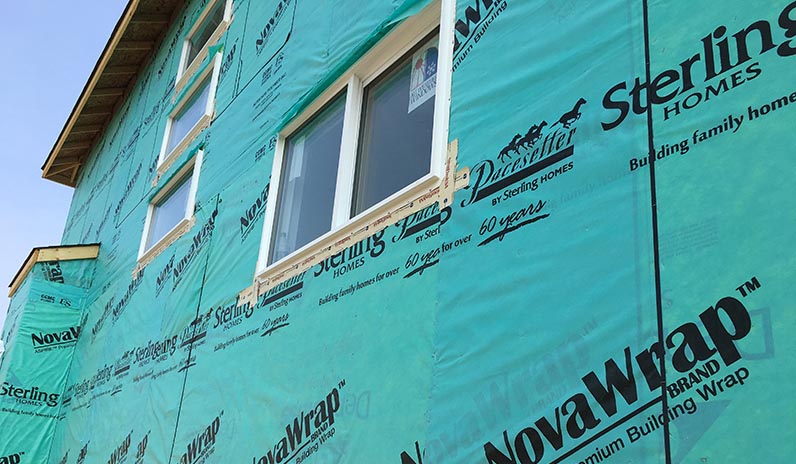
The home also boasts a low AER, which involves the rate at which indoor air is replaced with outdoor air. This is important to maintain air quality within a home. With an AER of less than 1.0 ACH/h, the home in Harmony performs 69 per cent better than the standard set out in the building code (3.2 ACH/h).
Another sustainable feature of the home is its combination instantaneous water heater and domestic air handler system. While traditional homes have two mechanical systems (a furnace-based forced air heating system and hot water tank storage system), Harmony uses one central system. An instant hot water system feeds both the air handler and any hot water requirement with no storage required. This system is energy efficient and, because one of the units is no longer needed, this magnifies its energy performance.
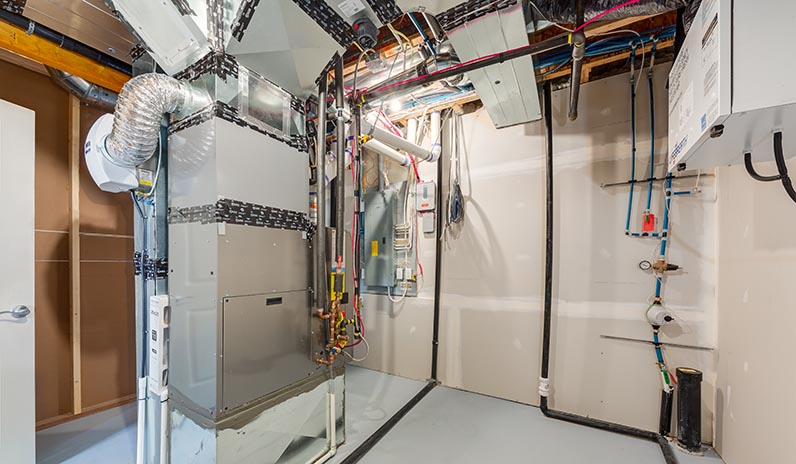
While the home doesn’t have solar panels installed, it has been equipped to be solar ready, should homeowners decide to take that path in the future to increase the home’s sustainability even further.
The sustainable products and systems used in the home in Harmony come at an additional cost of $6,500, although homeowners who choose to go this route can expect some long-term cost savings when it comes to energy use.
“Sterling Homes was very focused on one goal with this project,” said Mike. “Maximum performance at minimum cost. Sterling has an exceptional team with incredible experience, and via trade partner relationships, we were able to design an exceptional home with a reasonable increase in cost. There is nominal difference in maintenance and operation when comparing the Harmony home and standard homes. The building envelope approach is the best way to keep construction similar to average construction, but with the biggest performance enhancement that will last the lifetime of the home.”
Darren Chambers, Director, Corporate Purchasing and Process Improvement and Qualico lead on the Canadian Home Builders’ Association’s (CHBA) Net Zero Energy Housing Council, believes the work of the Qualico Sustainability Working Group is making headway on important research in preparation of code changes in the future.
"Regional projects like these two homes built by Sterling Homes, show that collaboration and sharing of advanced construction methods can help Qualico lead the way in understanding sustainable building practices that are affordable, innovative and marketable in residential new home construction," said Darren.
"It is impressive to see the energy rating reductions achieved with modest changes in mechanical systems, envelope tightness and minimal renewable energy sources."
Focus on Solar Power
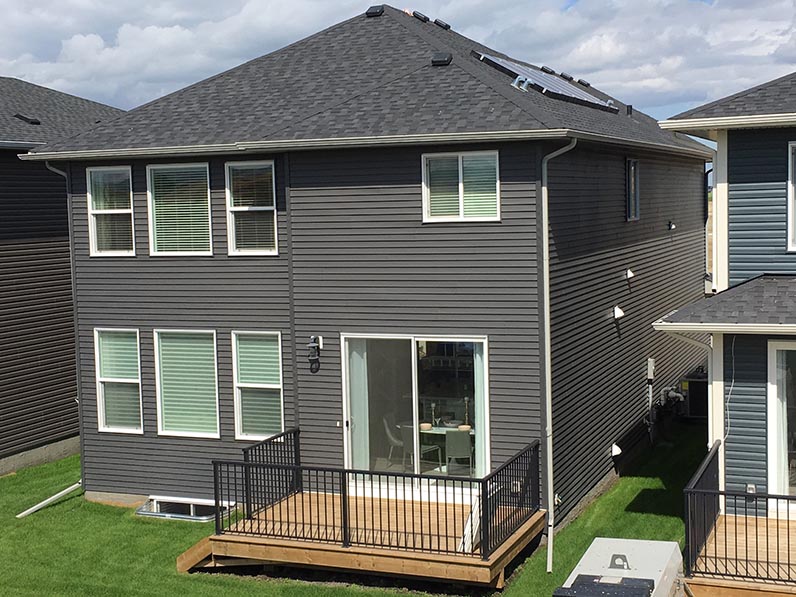
With the home at 49 Creekside Ave. in Calgary’s Sirocco community, Sterling Homes Calgary went in a slightly different direction to achieve a more sustainable new home. Here, the focus is on renewable energy, as the home has a six-panel PV (photovoltaic) solar panel system with 1,800 watt capacity that is fully complete and integrated into the home, with the ability to cover about 10 per cent of the home’s energy use.
It also allows for homeowners to return power through a bidirectional electric meter to the electric grid, which could potentially result in a credit from their local power company.
Besides the benefit of free renewable solar energy in the long-term, the solar panels used on this home carry a 25-year warranty and are maintenance-free.
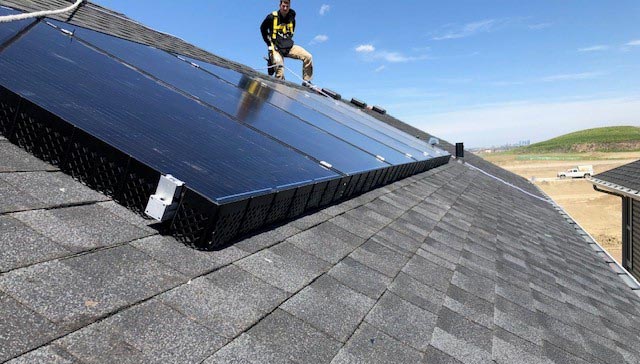
Like the home in Harmony, the Sirocco home has an AER that outperforms what’s been set out by code standards. While not as low as the Harmony home (at 1.0 ACH/h), the AER here is 1.5 ACH/h, which means that the Sirocco home performs 53 per cent better than the code guidelines.
“Sterling Homes Calgary intentionally designed Sirocco very differently from Harmony,” said Mike, “as we wanted to show renewable energy systems with this home. We were able to design an exceptional home with sustainable features at a $6,300 increase in cost.”
To continue to offer a variety of high-performance homes like the ones in Harmony and Sirocco, Sterling Homes Calgary is working to keep costs down for customers, using manageable and repeatable detailing and procedures.
And although Mike noted that the features offered in the homes are currently beyond what most customers are demanding, the homes’ sustainable benefits are marketed to potential homeowners using specific EnerGuide stats, in conjunction with utility costs, mortgage costs, and Canada Mortgage and Housing Corporation fee information.
Published: May 2019
2018 - A Year in ReviewPublished: May 2019
2018 - A Year in Review- Single-Family Homes
- Multi-Family Homes
- Communities
- Commercial
- Building Materials and Services
- Property Management
Let us help you direct your questions to the right team at Qualico.



